Want to keep a tarantula, but not sure which species to choose out of the 1000+ available options? Fret not! I’ve curated the list of the best beginner-friendly tarantula species for you to choose from. All of them are New World tarantulas. They are hardy, easy to maintain, docile, and widely available.
Make sure you read my guide on tarantula care to learn how to keep a tarantula while you are waiting for your first tarantula.
Brachypelma smithi
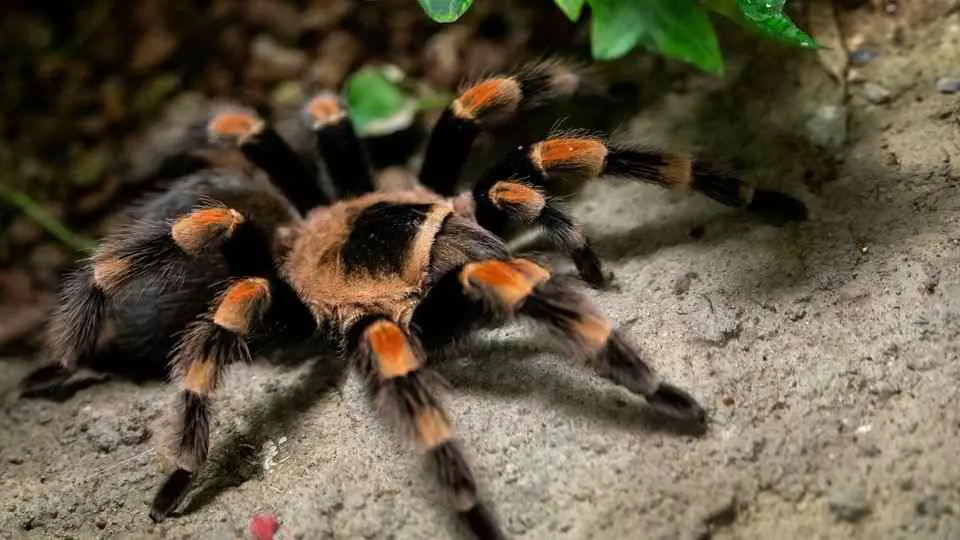
Also known as the Mexican red-knee, B. smithi is one of the most popular tarantulas in the world. As its common name implies, this tarantula has a red leg segment that makes it look as if it has red knees. The carapace of this species has a tan margin.
Generally, the female B. smithi can live for 25 to 30 years. The male has a much shorter lifespan between 5-10 years. Female adults can grow up to 6″ in leg span.
Originated from Mexico, B. smithi is now available worldwide, bred by many tarantula hobbyists.
Brachypelma boehmi
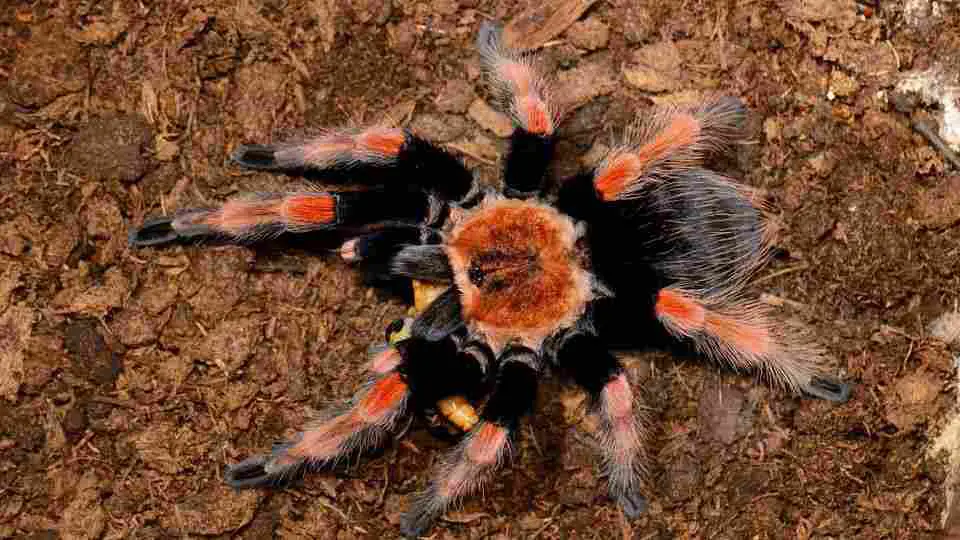
B. boehmi, also known as Mexican fire-leg, is a species of tarantula that can grow up to 6″ in leg span.
The adult tarantula is characterized by having dark upper legs that turn red downwards, followed by pale, and back to dark at the feet. The vibrant color of this tarantula makes it a popular choice amongst hobbyists.
The female Mexican fireleg can live for more than 20 years. Its male counterpart has a lifespan of 5-10 years.
This species is sometimes confused with the Mexican red-knee or Mexican red-leg. While it is slightly more aggressive than other Brachypelma species, Mexican fire-leg is still a good choice for beginners.
Brachypelma emilia
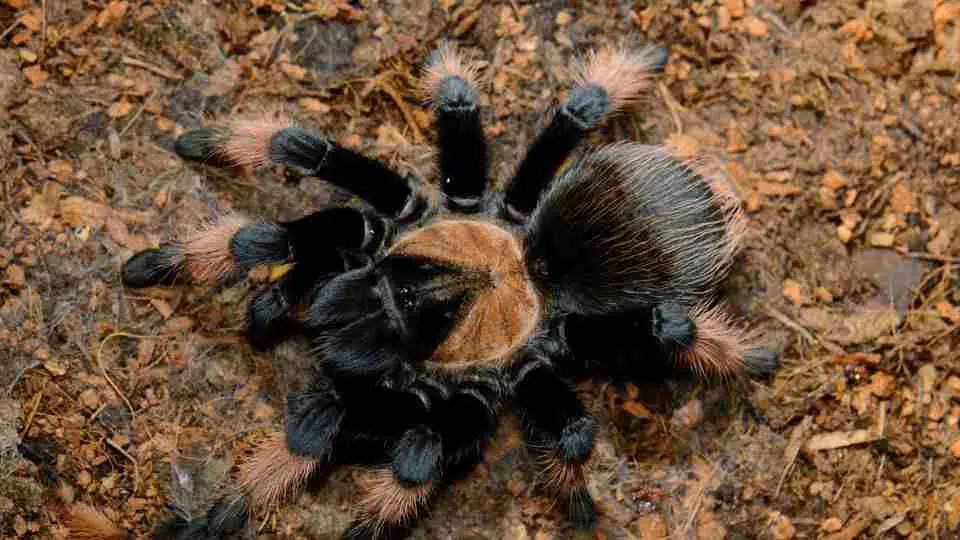
The Mexican red-leg, scientifically known as Brachypelma emilia, is one of the popular Brachypelma siblings that many hobbyists keep as their first tarantula.
Originating from Mexico, B. emilia has a unique black triangle on its reddish carapace (aka its back). The middle section of its black-colored legs are reddish, and it has red urticating hairs on its black abdomen.
Generally, a female Mexican red-leg can live for 20-30 years. In contrast, the males can only live for 5-10 years.
Mexican red-leg can grow up to 5” in leg span.
Aphonopelma chalcodes
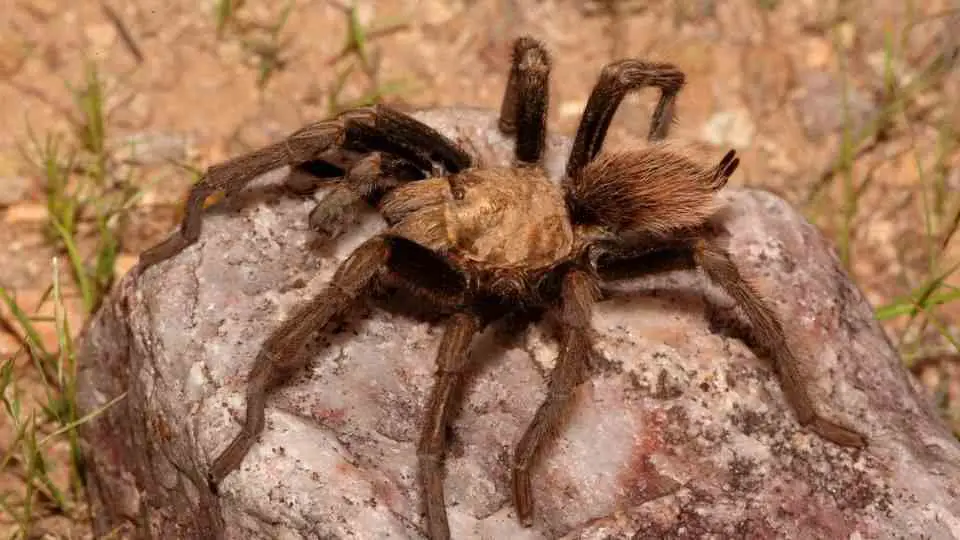
Aphonopelma chalcodes is also known as the Arizona blond or desert blonde. Originated from the desert of Arizona and Mexico, the Arizona blond is a medium sized tarantula with a leg span measuring up to 5”.
Being a desert species, the Arizona blond is hardy, and does not require a lot of moisture. They tend to stay dormant in the winter, and emerge from their burrow only when the temperature increases.
Aphonopelma chalcodes is characterized by its unique appearance, where the female adult has pale bristles that form a big contrast with her dark abdomen and legs. They are obligate burrowers, which means they will build their own burrow instead of using an existing one.
A female Arizona blond can live for 10-20 years depending on how you take care of her. Male can live for 10 years, which is quite long compared to other male tarantulas.
Aphonopelma seemanni
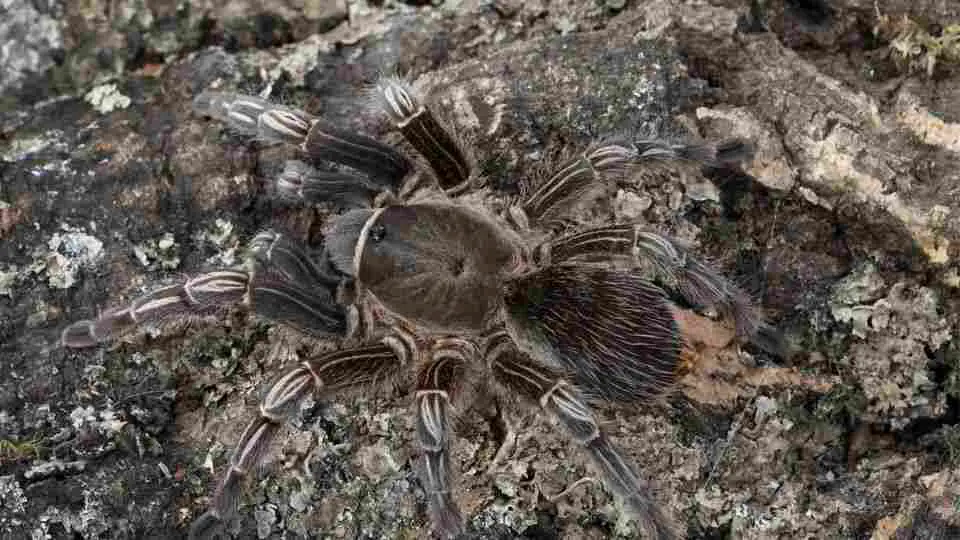
Commonly known as the Costa Rican Zebra, A. seemanni originated from Central America. It has black body with pale stripes near the leg joint, giving the pattern resembling zebra stripes.
A fully grown Costa Rican Zebra can reach 5” in leg span. The female can live for 20 years or more, while the lifespan of the males is much shorter at around 5 to 10 years.
Costa Rican Zebra are obligate burrowers. You need to provide enough substrates for them to burrow.
Avicularia avicularia
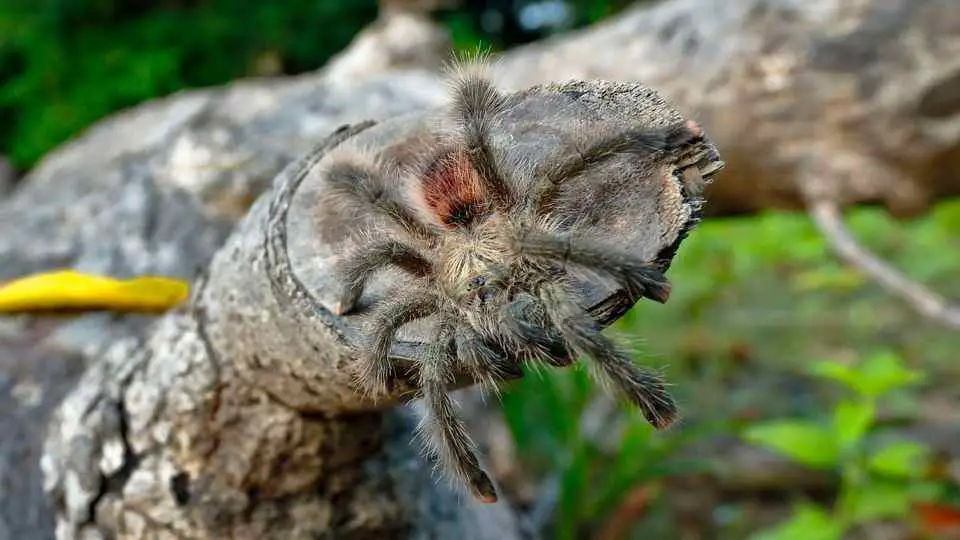
Known as the Pinktoe tarantulas, Avicularia avicularia is the best arboreal tarantula for beginners. You need a tall tank for enclosure to mimic its natural environment.
Pinktoe tarantulas originate from the tropical rainforest of Central and South America. They require slightly higher moisture than those desert or semiarid species.
Pinktoe tarantulas are characterized by their pinkish feet or toes. A mature female Pinktoe can reach 5” leg span.
On average, female Pinktoe tarantulas live for 8 years. Males are short-lived, where they typically die in 2-3 years.
I’ve written a Pinktoe care guide which you can refer to, if you decide to get 1 as your first tarantula.
Caribena versicolor
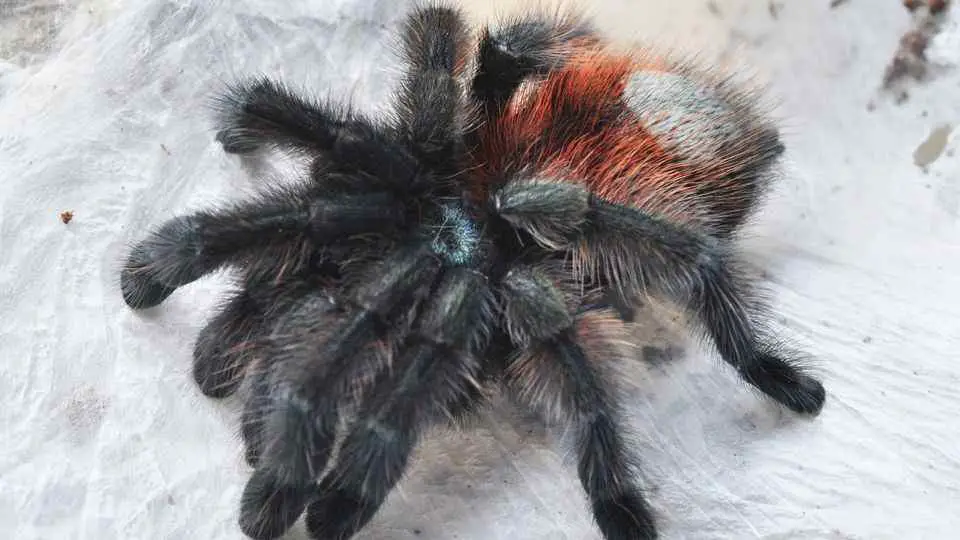
More commonly known as Antilles Pinktoe or Martinique Pinktoe, Caribena versicolor is an arboreal tarantula originating from Martinique. It was previously called Avicularia versicolor until the scientists moved it into the genus Caribena.
Martinique Pinktoe is characterized by its bluish green carapace and reddish-purple body, along with its pink toes of course. A juvenile Martinique Pinktoe has an exotic blue body, which is quite rare in animals. The unique colorations of both adult and juvenile makes this species popular in the hobby.
On average, a female C. versicolor can live for 10-15 years, growing up to 6” in leg span. Male usually do not live more than 5 years.
Chromatopelma cyaneopubescens
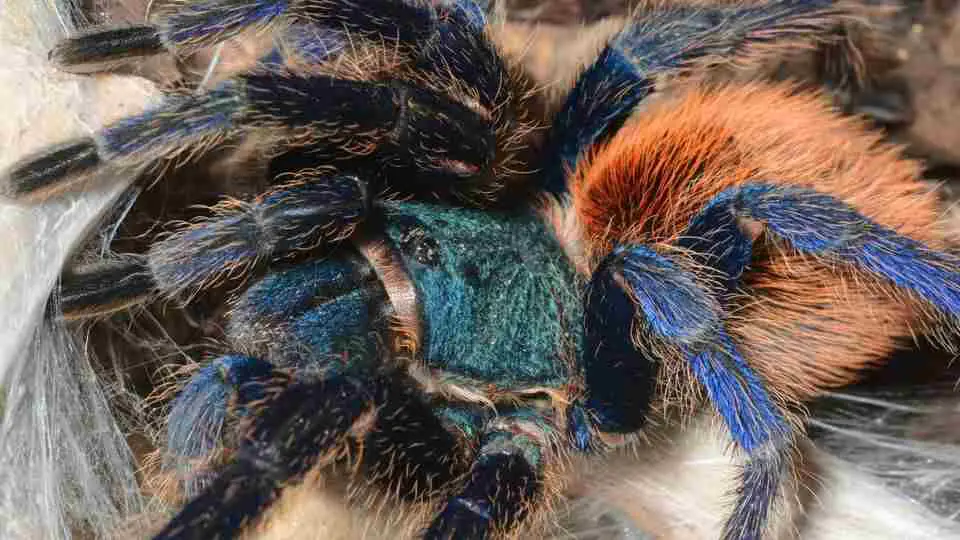
Chromatopelma cyaneopubescens is a Venezuela species of tarantula that can grow up to 6” (leg span).
Commonly called the Greenbottle blue tarantula, this species has a stunning iridescent bluish body, making it unique compared to other tarantula species.
The Greenbottle blue tarantulas have a medium lifespan compared to other tarantulas. Male typically lives for 3-4 years, while the female can live for 10-15 years if well taken care of.
This species is sensitive to moisture. Both the adult and older juveniles prefer a dryer environment.
Grammostola pulchra
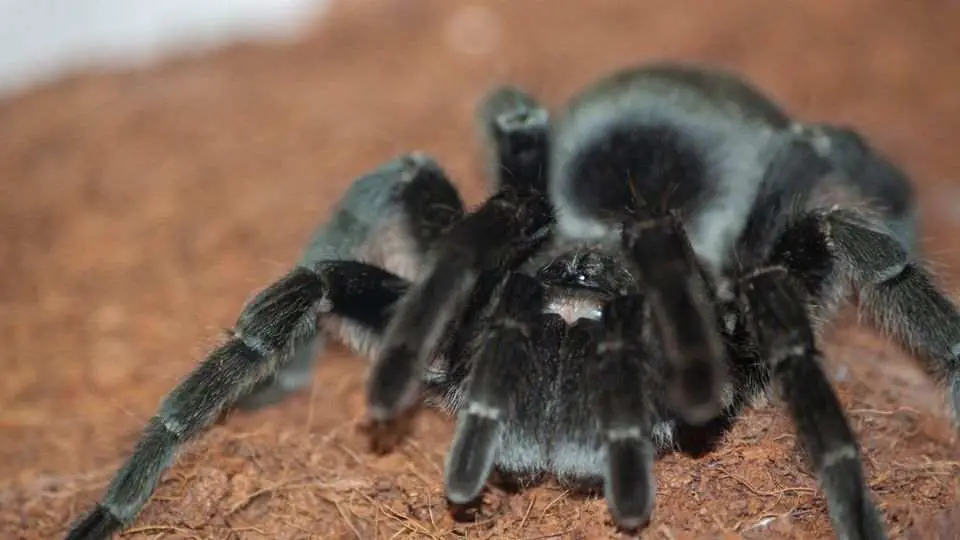
Grammostola pulchra is a Brazilian tarantula that can grow up to 7”. If you want a slightly bigger tarantula, this is the one that you should consider.
Also known as the Brazilian black, this species is, black. It has a pair of huge fangs that look intimidating, but they rarely bite. When disturbed, they tend to escape rather than attack.
On average, a female Brazilian black can live for 25-30 years. Like other species, male are short-lived, with a lifespan between 5 to 10 years.
Grammostola pulchripes
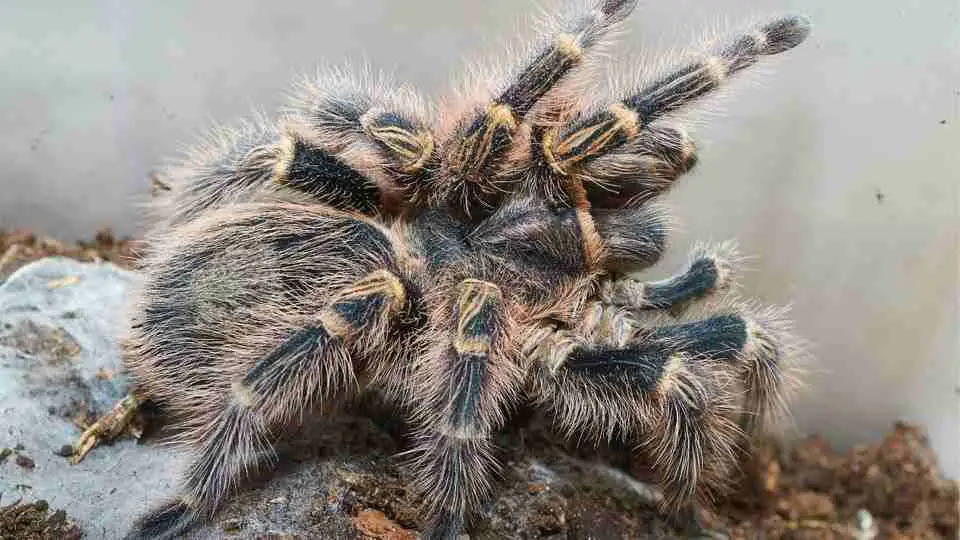
Want a bigger tarantula? Get the Grammostola pulchripes. Known as the Chaco golden knee, this species can grow up to 8” in leg span! Don’t be tricked by its huge body though. This species is really gentle, making it suitable for all beginners.
G. pulchripes originated from Argentina and Paraguay. It has a black body characterized by the golden stripes found on its leg joints.
In total, a female G. pulchripes has a lifespan of 20-25 years. In contrast, males usually don’t live for more than 5 years.
Grammostola rosea
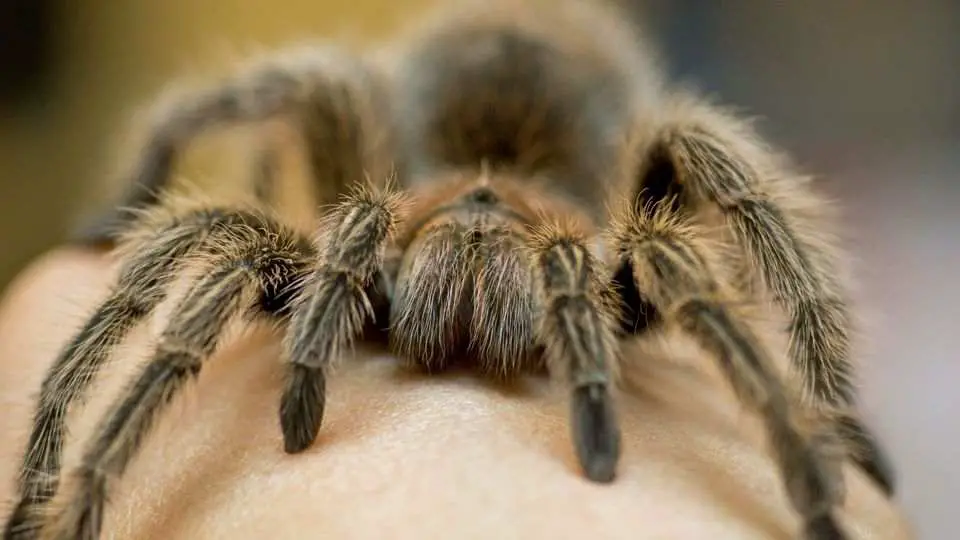
Grammostola rosea is a species of tarantula found in Chile and Peru. It can grow up to 6” in leg span.
Also known as the Chilean rose, this species has a rose-gold carapace and a black body. While it is one of the most gentle tarantula species, it does attack if mishandled.
One thing worth mentioning is that Chilean gold can fast for a long time. Don’t get too worried if it refuses to eat for months.
Generally, a female Chilean gold can live to 20-25 years old. The male counterparts have a much shorter lifespan of 5-10 years.
Lasiodora parahybana
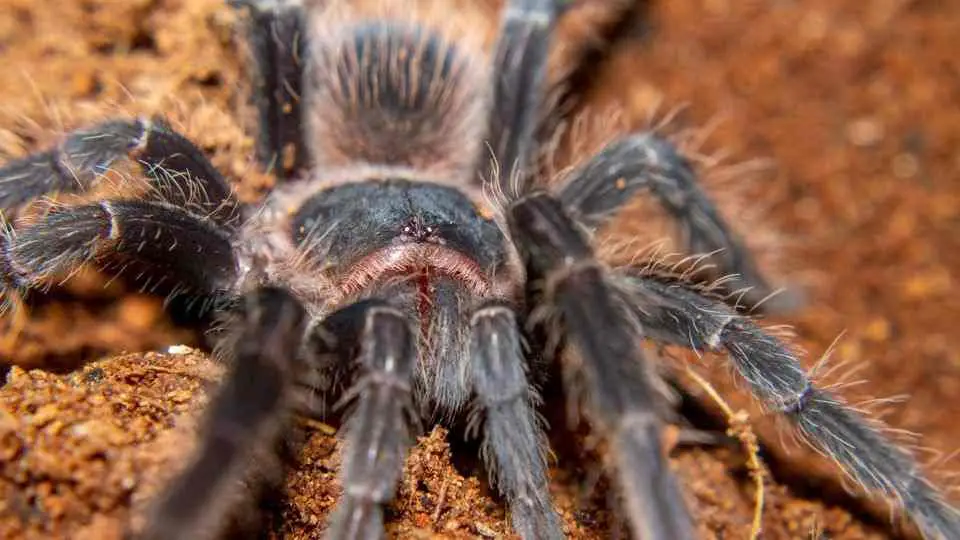
If you are looking for huge beginner tarantula species, Lasiodora parahybana is the biggest that you can get. With a 10” leg span, L. parahybana is one of the largest tarantulas in the world. While this species is gigantic, it is surprisingly easy to take care of!
Lasiodora parahybana is also known as the Salmon pink. This Brazilian species is characterized by its salmon-pink hairs and stripes on its dark body.
Typically, the female Salmon pink can live for 15-20 years. In contrast, the male usually doesn’t live for more than 5 years.
Tliltocatl albopilosus
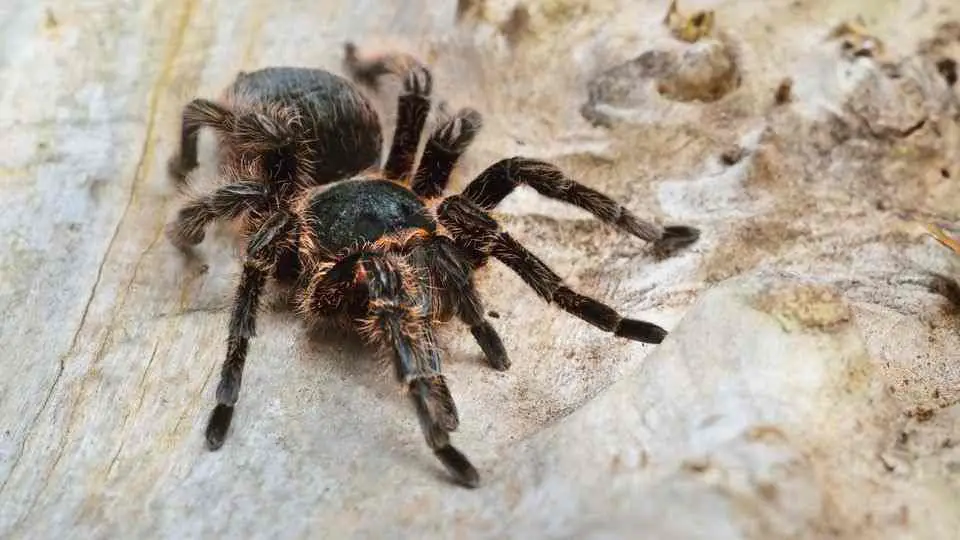
Tliltocatl albopilosus is also known as the Curly hair, originated from Central America. Formerly known as Brachypelma albopilosus, this species is an opportunistic burrower that can make use of any gaps to build a burrow.
Tliltocatl albopilosus has uniquely curled long hairs not seen in other species. They can grow up to 6” in leg span.
In general, the lifespan of a female Curly hair is 20-25 years. Male Curly hair can only live for 5-10 years.
Tliltocatl vagans
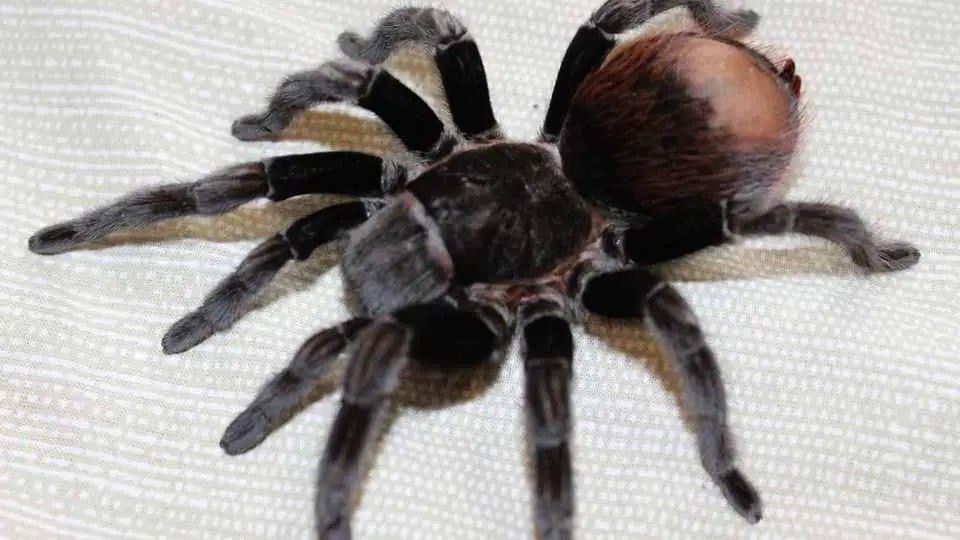
Tliltocatl vagans is a species of tarantula by the common name Mexican red rump. It was formerly known as Brachypelma vagans.
T. vagans can be found natively in Mexico and Central America. It was also found in the wild in Florida, probably as a result of being released by irresponsible keepers.
The Mexican red rump can grow up to 6” in leg span. They have a black velvet body with red hairs on their abdomen.
Females have a lifespan of 20-25 years, while males are significantly short-lived, with an average lifespan of 5-10 years.
The bite from T. vagans is extremely painful, and the swellness can last for a few days. Try not to get bitten.


